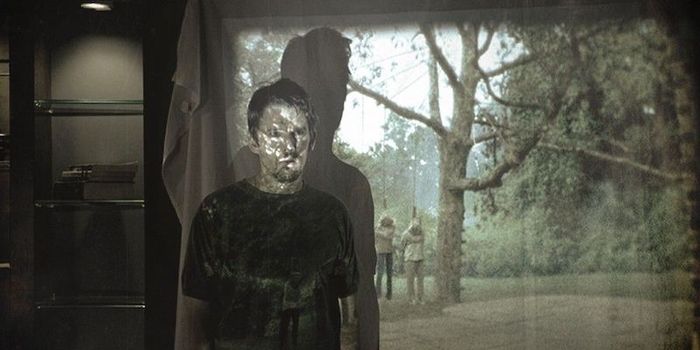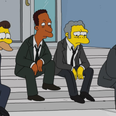In case you should want to, the “scariest movie ever made” is available to watch at home right now.
If you’ve ever wondered what was the scariest movie ever made, and how could it be proven, then look no further… Released in cinemas in Ireland and the UK on 5 October 2012, Sinister proved to be something of a sleeper hit.
On a teeny $3 million budget, the movie made over $87 million worldwide, and was given good-but-not great reviews (63% on Rotten Tomatoes). Yet in the decade-and-a-bit since its release, the film has remained in the conversation as a bit of a modern horror classic.
Directed by Scott Derrickson, who was hot off the success of The Exorcism of Emily Rose, and written by C. Robert Cargill (the pair would reunite again another scary movie, The Black Phone), the idea for Sinister was formed within a nightmare Cargill had after he watched The Ring.
The writer described the dream in which he discovered a film in the attic of his home which depicted the hanging of an entire family, which is essentially the set-up for the entire plot here.
The finished script tells the story of a struggling writer (Ethan Hawke, who also re-teamed with Derrickson and Cargill for The Black Phone) who moves his loved ones into the former home of a family he knows were murdered, hoping it will help him with his writer’s block. Before long, he discovers a collection of videos, each of which depict a different set of grizzly murders, all of which are somehow connected to the house that he has just moved into.

How science proved it was the scariest movie ever made
The set-up is a pretty standard one for a horror movie, but there’s a particular edge thanks to the inclusion of what feel like snuff films that Hawke’s character is trawling through for the sake of his career, and at a severe risk to his entire family.
Additionally, the movie’s central antagonist Bughuul manages to leave an impression, with Derrickson and Cargill moving away from the initial idea of what was described as “a creepy Willy Wonka”. Instead, they took inspiration from Norwegian black metal performers.
Eventually, while scouring the internet for images titled “horror”, Derrickson came across one simply titled ‘Natalie’. He contacted the photographer of the image and paid them $500 for the rights to it, with the photographer receiving a concept design credit on the final movie. And that was how we got the look of Bughuul.
As for how scary the movie itself has proven to be? Back in 2021, Forbes reported on the Science of Scare Project, in which the heart rates of 50 people of varying ages were tracked as they watched over 100 hours of scary movies.
This was then whittled down to the 35 movies that caused the highest average increase in BPM for the viewers. The resting heart rate of the participants was 65 BPM, and of all of the movies, Sinister provoked the largest increase, rising to an average of 86 BPM.
Sinister also provided the second-biggest jump scare out of the study, with one particular moment (you’ll know it when you see it) getting the rates up to 131 BPM, second only to one particular moment in Insidious (again, you’ll know it when you see it), which got viewers up to 133 BPM.
So, there you have it. If you’re looking to check out the scientifically-proven scariest movie ever made, Sinister is available to watch on Netflix right now, or with a NOW Cinema Membership.
Related articles:
- 30 years on, the origins of one of cinema’s biggest unsolved mysteries
- Silent Night brings back one of the best action directors of all time
- QUIZ: Can you name all of these very tricky movie titles?
- 10 years ago this week, Hollywood couldn’t find a star for one of its biggest movies
LISTEN: You Must Be Jokin’ with Aideen McQueen – Faith healers, Coolock craic and Gigging as Gaeilge





















































